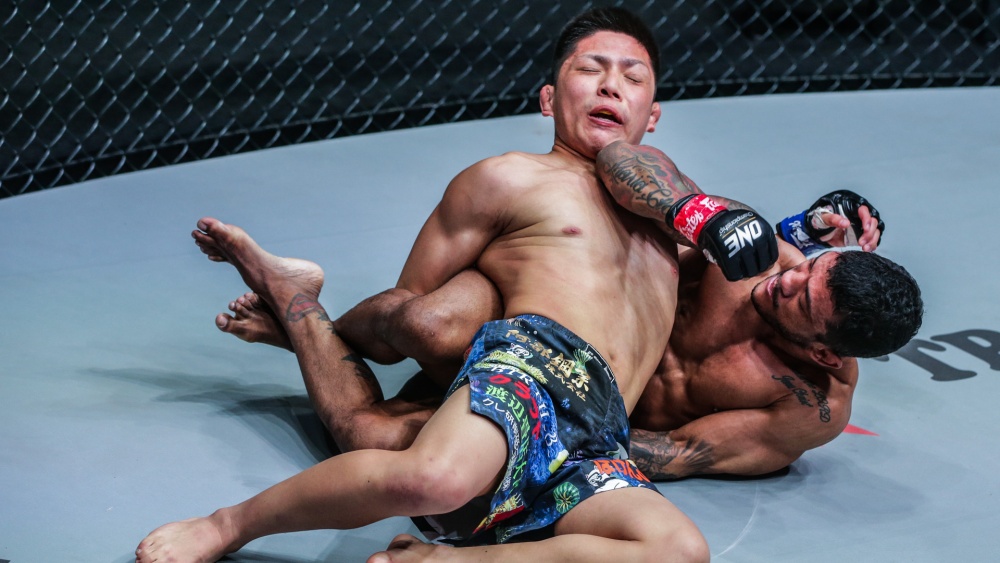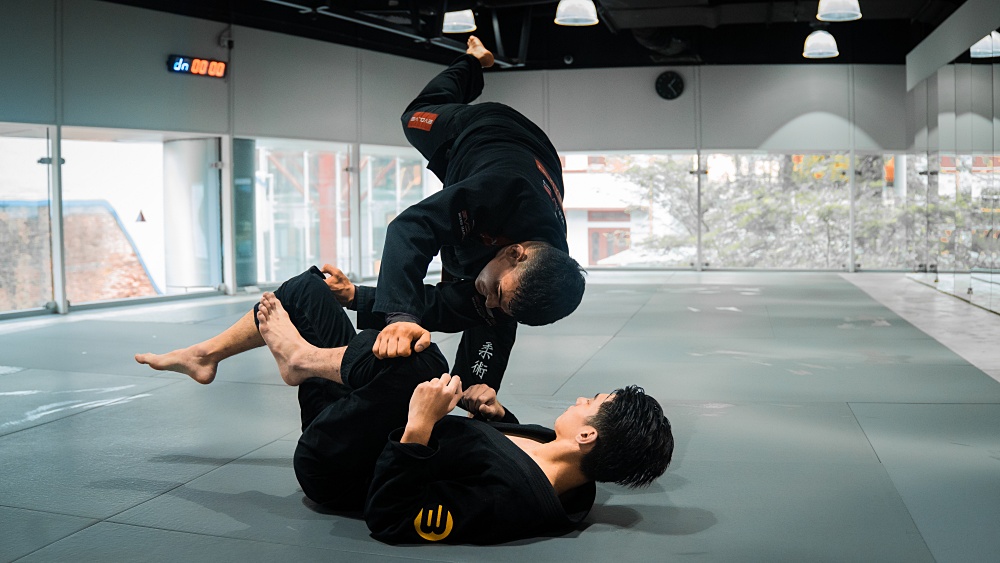Brazilian Jiu-Jitsu is a martial art that focuses on controlling an opponent, leading to finishing with a submission. Over the years, countless techniques have been introduced, tested, and modified for grapplers of all shapes and sizes to use. Among these are moves that have become the signature techniques of many champions in the sport.
One of these is the deadly crucifix. The crucifix is a versatile technique that aims to limit an opponent’s movement. Today, we’ll talk about its primary purpose, entries, and finishes.
Crucifix Defined
The crucifix is a technique where you control an arm using your legs. You form a “T” in relation to your opponent, hence the name. The position aims to isolate the opponent’s arms in such a way that it will be difficult for them to escape. It also leads to many submission opportunities for the attacker.
The crucifix can be applied in different ways. You can loop your leg near the bicep. This is usually the approach for back take crucifixes. You can also block the arm using your knee from top pins like side control. Whatever the configuration, the purpose of isolating the arm stays the same.
Benefits Of The Crucifix
The great thing about the crucifix is its versatility. You can get the position from a variety of entries, especially when someone turtles up. Also, since the leg is the primary tool to control the opponent’s arm, it is powerful enough to manage even the biggest grappler in the gym. Think of the crucifix in the same light as the kimura trap. You can get into the technique from many positions, and it can be used to control and set up your offense.
The crucifix can also be used as an alternative to the standard back take. Instead of being parallel to your opponent, you attack at an angle instead. Of course, as with all positions, the crucifix gives you options to submit using arm locks and chokes. It doesn’t matter your build, size, and age; the crucifix is easy enough to apply and will be a great addition to your overall game.
How To Apply The Crucifix
In this video, BJJ black belt Eli Knight demonstrates three basic entries to the crucifix. The first technique is the classic entry from the turtle position. If you have dabbled with the crucifix in the past, this is most likely the entry that you practiced. From the turtle position, start by controlling the opponent’s hips using your knee and far arm. Eli suggests pushing the head as you move your knee to the rib area. This will give you space to wedge your foot near the crook of the arm. Loop your leg on the arm, tuck the far arm underneath their body, and roll on your shoulder to complete the rolling crucifix.
The second technique is the crucifix from the kimura trap. The kimura trap is a powerful position where you maintain a kimura grip to transition to different attacks. The technique starts as your opponent attempts to pass your guard. Your opponent will surely lead with their arms in an effort to pass. This should give you the opening to secure a kimura grip. The kimura grip is where you figure-4 your arms against your opponent’s. From the kimura grip, you can sweep them over your head if they stay close, or you can also spin, turn them over, and get the crucifix by scraping your foot near the bicep. The latter technique may seem like a flashy move, but you’ll be surprised at how easy it can be applied once you drill the spin to the back.
The last technique shown is the crucifix from the cradle position. Eli shows the cradle once your opponent turns away from bottom side control. Once you get the cradle, slide your feet and lift your opponent to the seated position. Once in the seated position, you can easily get your first hook on the far side. If they block the hook using their arm, you can slide the knee that’s placed near their back to the far hip. Doing this will give you an opening to apply the crucifix. This third option is great if you prefer to fully nullify your opponent’s movement as you go to a better position.
We focused purely on the entries in this post as we believe that understanding position should always take precedence over submissions. These three techniques will serve as your foundation for mastering the crucifix. Learn the nuances of these entries and start including them in your rolls. You can introduce submissions from the crucifix once you can perform these without difficulty.
Drilling The Crucifix
While the crucifix is relatively easy to do, it requires some coordination to properly pull off. This is especially the case for the rolling crucifix. The key to mastering the crucifix is understanding which leg you’ll use to loop against the arm. It can be confusing at first, but you’ll get it in no time with consistent drilling.
Start by drilling the technique with no resistance and gradually add common defenses as you improve. Keep in mind to focus on correct technique as you might hurt your training partners if your execution is not proper. Your application of the techniques will not be as smooth as you’d like in the first few attempts. Keep at it, and you’ll improve over time.
Final Thoughts
The crucifix is a fantastic technique that will surely elevate your BJJ game to a whole new level. It opens up unique submission opportunities and will make your game much more dynamic and unpredictable. Remember to always practice on both sides so that you can apply it from many positions.
If you’d like to know more about the crucifix, it is always a good idea to tell your coach so that you’ll be guided accordingly. Be open to feedback and stay consistent in your training. The journey to the black belt is long and full of ups and downs. Appreciate every moment and enjoy the ride!
You may also like:

















